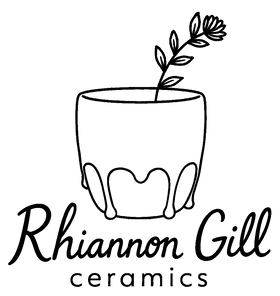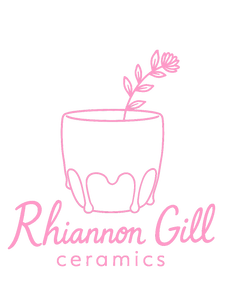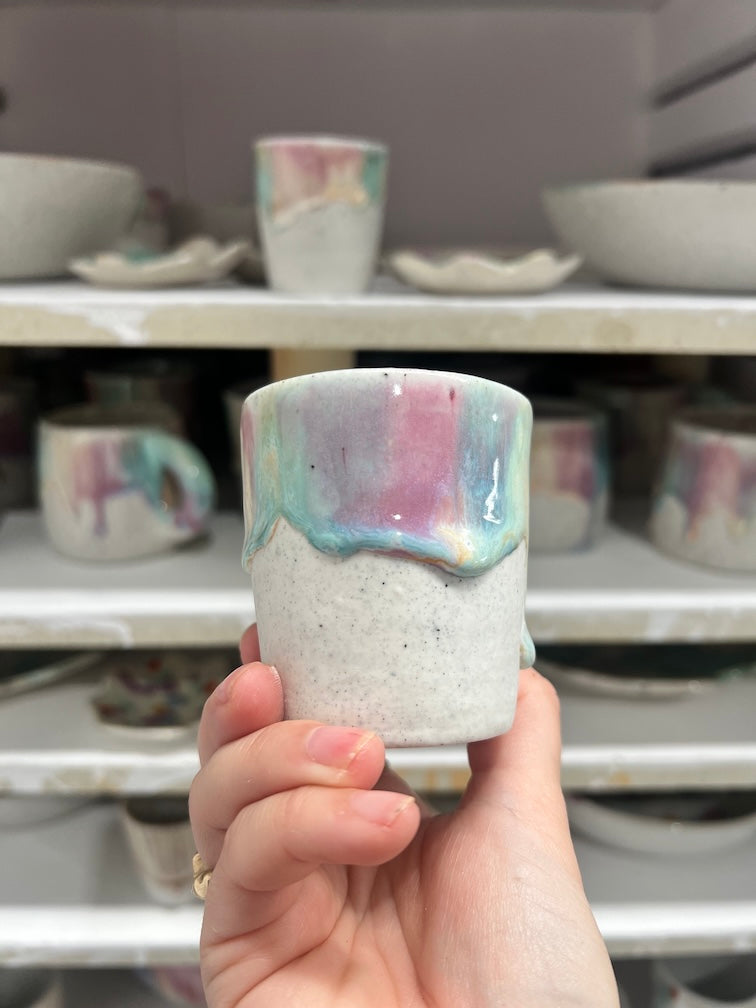Published | Updated by Rhiannon Gill
Understanding Cone 6 Electric Oxidation Firing
In ceramics, firing temperature is measured using pyrometric cones. Cone 6 sits in the mid‑fire range—about 1220–1240 °C (2230–2264 °F). At our studio we reach this temperature using electric kilns in an oxidation atmosphere, meaning plenty of oxygen in the kiln and no fuel burned inside. This method is hot enough to fully vitrify stoneware yet 60–80 °C cooler than cone 10 high‑fire ranges.
The lower peak temperature leads to shorter firing cycles and lower electricity demand. It also puts less strain on kiln bricks and elements, extending the life of expensive equipment. Many small kilns are designed to max out at cone 6, making mid‑fire accessible to small studios and home potters.
Environmental Benefits of Cone 6 Electric Oxidation
Firing to cone 6 in an electric kiln can significantly lower your studio’s carbon footprint. Industry tests and studio loggers show that mid‑fire runs consume roughly 25–35 % less electricity per load than identical forms fired to cone 10. Because the kiln doesn’t have to climb or soak at the highest temperatures, firing cycles are shorter (often finishing in 7.5 hours instead of 10.5), meaning fewer kilowatt‑hours and lower energy bills.
Skipping the high‑fire climb pairs well with renewable power: if your electricity comes from solar, wind or hydro, firing at cone 6 makes it easier to align with periods of abundant green energy or off‑peak tariffs. You’ll also produce less heat and emissions in your workspace because electric oxidation firing doesn’t require fossil fuels.
- Lower electricity consumption: A ~30 % reduction in power per firing translates into measurable cost savings and lower greenhouse‑gas emissions.
- Longer equipment life: Cooler peaks reduce wear on elements and kiln furniture, delaying replacements and minimising waste.
- Cleaner air: Many heavy‑metal colorants volatilise at high temperatures. Firing at cone 6 decreases burnout and reduces harmful fumes.
- Smaller footprint: Mid‑sized electric kilns are more compact than large reduction kilns, allowing for efficient, decentralised studios.
Bright Colours at Mid‑Fire
Historically, potters fired to cone 10 to achieve deep copper reds, bright oranges and other saturated hues. Today’s glaze chemistry brings those colours into the mid‑fire range. Besides regular raw materials used in glazes, the star players are often encapsulated stains, which encapsulate metal oxides such as cadmium and selenium within a zircon matrix. This process stabilises otherwise reactive pigments, allowing them to retain vibrant reds, oranges and yellows at cone 6. Because the metal oxides are locked inside zirconium silicate crystals, the colour remains stable and food‑safe.
Encapsulated stains are typically used at 5–10 % by weight in a glaze, though some intense colours require up to 20 %. The result? Jewel‑tone glazes that rival high‑fire reduction reds without the need for gas kilns.
Other mid‑fire colourants include:
- Copper oxide and copper carbonate for turquoise and aqua glazes. In a fluid‑melt cone 6 base, around 2 % copper oxide yields vivid turquoise; copper carbonate produces a bluer, slightly less intense hue.
- Zircon opacifiers such as Zircopax and Ultrox. Adding 10–12 % zirconium silicate to a clear base creates an opaque, glossy white, providing a bright canvas for coloured slips and underglazes.
- Titanium or rutile additions for breaking glazes and speckled effects. These minerals encourage crystal growth and surface variation at mid‑fire temperatures.
When properly formulated with lead‑free materials, these glazes pass leach tests and meet food‑safety standards. Always test new recipes on your clay body and fire to maturity before using them on functional ware.
Durability & Daily Use
Mid‑fire stoneware isn’t a compromise in strength. At cone 6, most stoneware bodies vitrify to below 1–2 % water absorption, meeting or exceeding standards for dishwasher, oven and microwave safety. With proper glaze fit, the ware resists chipping and thermal shock. Because the firing cycle is slightly gentler, there’s less warping and fewer glaze defects.
Our Commitment at Rhiannon Gill Ceramics
At Rhiannon Gill Ceramics we believe sustainable practices should enhance—not limit—artistic expression. All of our handmade ceramics including, mugs, bowls and planters are fired to mid‑fire maturity. By switching from cone 10 to cone 6, we’ve cut our studio’s energy use by roughly one‑third per kiln load. We reuse packing materials, recycle clay offcuts and design pieces intended to last decades.
We also continually test and refine our glazes to keep our colour palette playful and food‑safe. The bright turquoises, mango oranges and cotton‑candy pinks you see on our shelves come from years of glaze testing and carefully balanced base recipes.
Frequently Asked Questions
- Does cone 6 stoneware chip more easily than high‑fire ware?
- No. When fired to full maturity, cone 6 stoneware is fully vitrified and often matches or exceeds the mechanical strength of cone 10 stoneware. It’s suitable for everyday tableware.
- How much energy does cone 6 firing save?
- Electric kilns fired to cone 6 use about 25–35 % less electricity per load than comparable high‑fire runs, thanks to lower peak temperatures and shorter firing cycles.
- Are brightly coloured cone 6 glazes food‑safe?
- Yes. Lead‑free encapsulated stains and properly formulated glazes pass standard leach tests and meet food‑safety requirements.
- Does firing at a lower temperature reduce production costs?
- Lower energy use and less wear on kiln parts reduce operating expenses, freeing resources for high‑quality materials.
- Can I achieve reduction‑style colours at cone 6?
- Yes. Modern mid‑fire glaze chemistry, including encapsulated stains and copper additives, recreates reduction reds and other effects in an oxidation atmosphere.


